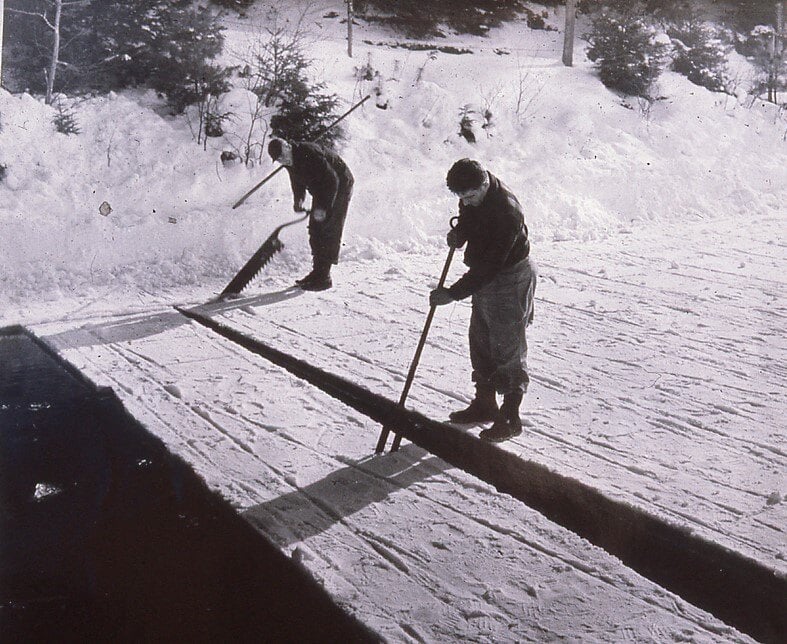We are in the midst of completing a large number of building energy assessments for buildings across Vermont, and while the specifics can change a bit, the process is pretty similar for all the buildings. In broad strokes there are three steps: initial data collection and review, site visit and interview, and analysis and reporting. These assessments have been a modified version of the ASHRAE Level 2 assessment, and this overview is somewhat specific to that level of analysis.
Initial Data Collection
Before we do anything, we collect some information about the building and energy use. Most important are information about the building size and construction, and energy use information. Ideally, we get drawings or as-builts for a building, although more often than not in this set of assessments these don’t exist. But even estimates of building size and use are still helpful for us to plan for a productive site visit. Energy use information typically comes from billing information for all energy used at the site including electricity, natural gas, fuel oil, propane, wood, diesel etc. Having three years of data for all of these can help us better understand the biggest uses of energy in the building, see trends over time, and understand variability in energy use. All of this allows us to prepare for the site visit.
Site Visit and Interview
The most intensive piece of the process is a site visit. This can take a few hours for a smaller building, or all day for a larger building, but the process is the same. The site visit typically starts with an interview where we ask building occupants and facility managers questions about the building history, use, systems, controls, occupant comfort, upgrades (completed or planned), and any known issues regarding the building. We will also ask questions developed from review of the energy data and drawings provided in the initial data collection.
 After the interview we complete a detailed building enclosure assessment which includes a blower door test, infrared imaging, and R-value assessments of existing assemblies. The blower door test is performed by installing large fans within a frame at an exterior door, all other exterior windows and doors are closed and latched. The fans then depressurize the building while measuring the air passing through them to establish an air leakage rate for the building. Since the building is under negative pressure, this means exterior air is being pulled into the building through air leakage points. We typically try to perform this testing with cooler exterior temperatures, that way we can identify air leakage points by observing large temperature differentials on the infrared camera. These large temperature differentials can also indicate areas with little or no insulation. The infrared camera is used to inspect the entire shell of the building including all exterior walls, ceiling/roof, and slab/foundation. An R-value assessment of all enclosure assemblies is also performed by determining all the materials and their thicknesses present within the exterior assemblies. This is done by a combination of observation in the field and inspecting available building documentation such as drawings and specifications.
After the interview we complete a detailed building enclosure assessment which includes a blower door test, infrared imaging, and R-value assessments of existing assemblies. The blower door test is performed by installing large fans within a frame at an exterior door, all other exterior windows and doors are closed and latched. The fans then depressurize the building while measuring the air passing through them to establish an air leakage rate for the building. Since the building is under negative pressure, this means exterior air is being pulled into the building through air leakage points. We typically try to perform this testing with cooler exterior temperatures, that way we can identify air leakage points by observing large temperature differentials on the infrared camera. These large temperature differentials can also indicate areas with little or no insulation. The infrared camera is used to inspect the entire shell of the building including all exterior walls, ceiling/roof, and slab/foundation. An R-value assessment of all enclosure assemblies is also performed by determining all the materials and their thicknesses present within the exterior assemblies. This is done by a combination of observation in the field and inspecting available building documentation such as drawings and specifications.
IR imaging of a ceiling which identified a location with insulation missing, and air infiltration around a light fixture.
We also conduct an extensive mechanical, electrical, and plumbing assessment. We walk through every space of the building examining light fixtures, appliances, HVAC equipment, domestic hot water system, process loads, and other plug loads. For light fixtures we count how many and identify what type and wattage the fixtures are. We also identify how they are controlled – switch, occupancy sensor, photocell etc. For plug loads we look for general numbers of common and lower energy loads and look for specifics on larger items like refrigerators and space heaters. HVAC equipment assessment involves understanding both what is installed and how it is controlled. We are looking for thermostat controls and setpoints as well as boiler controls or fan controls. Similarly for domestic hot water systems we look at the temperature setpoint and how that is distributed, as well as what the usage is where it is distributed. We also examine the electrical service and panels to understand the capacity of the existing electrical system. There are a lot of other things that might be present too: exhaust fans, energy recovery units, dehumidifiers, air handlers, pumps, and heat exchangers, all of which we work to understand during the site visit.
through every space of the building examining light fixtures, appliances, HVAC equipment, domestic hot water system, process loads, and other plug loads. For light fixtures we count how many and identify what type and wattage the fixtures are. We also identify how they are controlled – switch, occupancy sensor, photocell etc. For plug loads we look for general numbers of common and lower energy loads and look for specifics on larger items like refrigerators and space heaters. HVAC equipment assessment involves understanding both what is installed and how it is controlled. We are looking for thermostat controls and setpoints as well as boiler controls or fan controls. Similarly for domestic hot water systems we look at the temperature setpoint and how that is distributed, as well as what the usage is where it is distributed. We also examine the electrical service and panels to understand the capacity of the existing electrical system. There are a lot of other things that might be present too: exhaust fans, energy recovery units, dehumidifiers, air handlers, pumps, and heat exchangers, all of which we work to understand during the site visit.

Recording details on the heating and domestic hot water equipment at an assessment site
All of this can be intensive and for the site this often means limiting access to the building while we investigate everything, but this can also be done with building occupants present (it can just be a bit distracting as we count light fixtures and closely inspect the kitchen faucet).
Analysis and Reporting
 With all this data in hand, we head back to the office to analyze it. We develop an understanding of how all the building enclosure and energy systems in the building work and include this in the final report. We also analyze existing building energy use to understand how that energy is being used. We also use the energy use data to benchmark the building against similar buildings in similar climates. Finally, we provide recommendations for upgrades or improvements to the building focused on energy savings. This typically includes air sealing improvements, additional insulation, lighting and lighting controls improvements or retrofits, and building heating and cooling system upgrades. We try and investigate the biggest energy users in the building, so for a building with a process load we typically investigate this too. These recommendations also come with estimated implementation costs and savings so that building owners can prioritize recommendations for implementation and understand the value of energy savings. Often the most cost-effective measures are easy to implement – think programming your thermostat or replacing incandescent light bulbs. And the more costly recommendations can often provide significant long term economic savings (in addition to energy savings) especially recommendations like adding insulation or switching heating systems from fuel oil to heat pumps or a wood pellet system.
With all this data in hand, we head back to the office to analyze it. We develop an understanding of how all the building enclosure and energy systems in the building work and include this in the final report. We also analyze existing building energy use to understand how that energy is being used. We also use the energy use data to benchmark the building against similar buildings in similar climates. Finally, we provide recommendations for upgrades or improvements to the building focused on energy savings. This typically includes air sealing improvements, additional insulation, lighting and lighting controls improvements or retrofits, and building heating and cooling system upgrades. We try and investigate the biggest energy users in the building, so for a building with a process load we typically investigate this too. These recommendations also come with estimated implementation costs and savings so that building owners can prioritize recommendations for implementation and understand the value of energy savings. Often the most cost-effective measures are easy to implement – think programming your thermostat or replacing incandescent light bulbs. And the more costly recommendations can often provide significant long term economic savings (in addition to energy savings) especially recommendations like adding insulation or switching heating systems from fuel oil to heat pumps or a wood pellet system.
We want to see these recommendations implemented so we typically work with building managers or owners to prioritize analyses they are interested in and make recommendations in-line with shared goals. We are available to answer questions about the final report or update recommendations if additional factors need to be considered.



